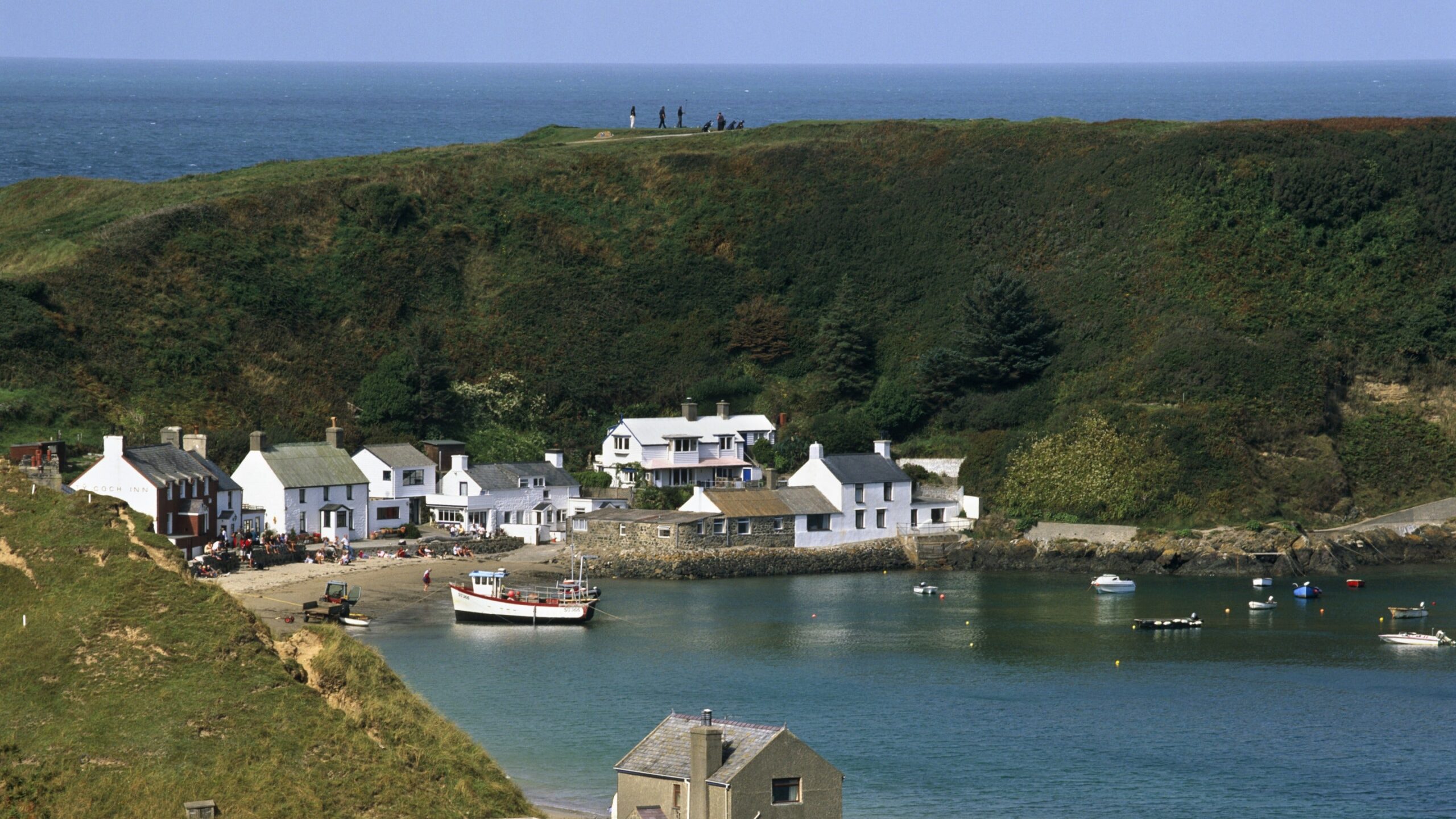Withstanding Change from Zanzibar to North Wales
“Although we are located in a different continent…we have something in common to share.”-Makame Juma, the Zanzibar Stone Town Heritage Society
As the effects of climate change are felt across the globe, historic places and their stewards are facing new challenges, including rising sea levels, flash floods, and soil erosion. In response to these growing challenges, the International National Trusts Organisation (INTO) launched the Withstanding Change project in 2022. This international project pairs heritage organizations that are facing similar environmental challenges together to “exchange best practices in climate adaptation.”[i] Currently there are five twinned projects, one of which is a partnership between Zanzibar Stone Town Heritage Society, Tanzania, and the National Trust team at Penrhyn Castle and the Llŷn Peninsula in Wales.

A carved balcony in Stone Town. Credit: Sherwood / flickr.com
Located along the Swahili coast of East Africa, Stone Town is an internationally recognized urban landscape that reflects centuries of diverse influences from Swahili, Arabic, Indian and European cultures dating as far back as the 10th century. Architectural icons include Baraza benches, Zanzibar doorways, and ornately carved balconies.

Penrhyn Castle and Garden, Gwynedd, Wales. Credit: National Trust Images/Chris Lacey
Nearly 1200 kilometers to the Northeast of Stone Town, Penrhyn Castle and the Llŷn Peninsula, both located along the coast of North Wales, have their own stories to tell. Now a National Trust property and part of the INTO Places program,[ii] the Neo-Norman Penrhyn Castle, was constructed on the Penrhyn estate in Bangor in the 18th century.
About 50 kilometers from Penrhyn castle is the historically renowned landscape of the Llŷn Peninsula of Wales, designated within an Area of Outstanding Natural Beauty in 1957.

Porthdinllaen, a fishing village on the Llŷn Peninsula | Credit: National Trust Images/Joe Cornish
Despite the many differences between Stone Town and the Welsh sites, in today’s climate emergency they share one critical similarity. All three sites are located along the coast and are consequently bearing the brunt of climate change. In Stone Town, historic buildings like the Old Customs House are exposed to increased humidity and salt corrosion which has deteriorated many elements of these buildings, from the limewash exteriors to iron roofs. While along the Llŷn Peninsula, rising sea levels and risks of landslides exacerbated by intensifying storms threaten the local villages.[iii]
Through the Withstanding Change project, the stewards of each of these three sites are sharing strategies for adapting to climate change: from technical solutions like installing tidal flood boards to investing into community through supporting the education of traditional heritage skills.
“There are always benefits to looking beyond your own horizon, and this twinning partnership has meant that our teams here in North Wales have been able to share experiences and learning with our friends in Zanzibar, providing a mutually beneficial way of working together on climate change solutions.”- Dewi Davies, Project Manager for the Llŷn Peninsula, National Trust (EWNI).
Read more about the Withstanding Change project by visiting INTO’s website: https://www.into.org/
[i] “Withstanding change: twinning takes off,” International National Trusts Organisation, 7 Dec. 2023, https://www.into.org/withstanding-change-twinning/
[ii] As a partner of the INTO Places Program, Members of the National Trust for Canada can visit 1000+ international sites for free including the Penrhyn Castle and Garden in Wales.
[iii] Dewi Davies, Hoshil Dhanji, Makame Juma, and Ceri Williams, “Wales and Zanzibar in twinning partnership, ” International National Trusts Organisation, 7 Dec. 2023, https://www.into.org/twinning-partnership/
